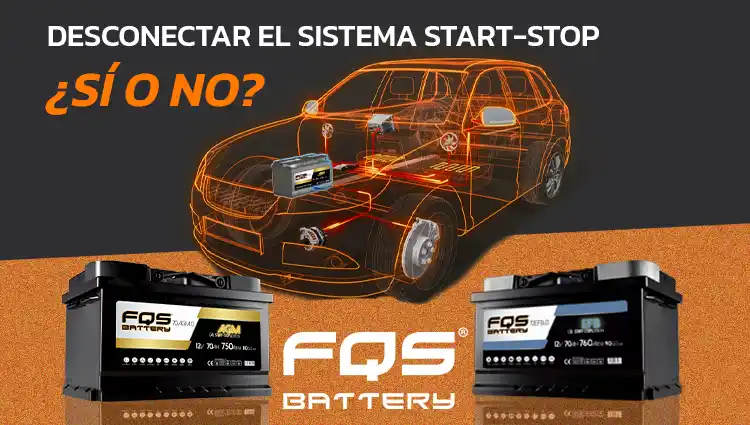Every week we get asked if disconnect (or deactivate) the Start-Stop It's a good idea. In this article, we explain what the Start-Stop system is, the advantages and disadvantages of disabling it, the technical and legal risks (warranty, vehicle inspection, emissions), and how it affects the EFB/AGM battery and the starter motor. If you're unsure whether to disable the Start-Stop system in your car, here's a clear guide to help you make an informed decision.
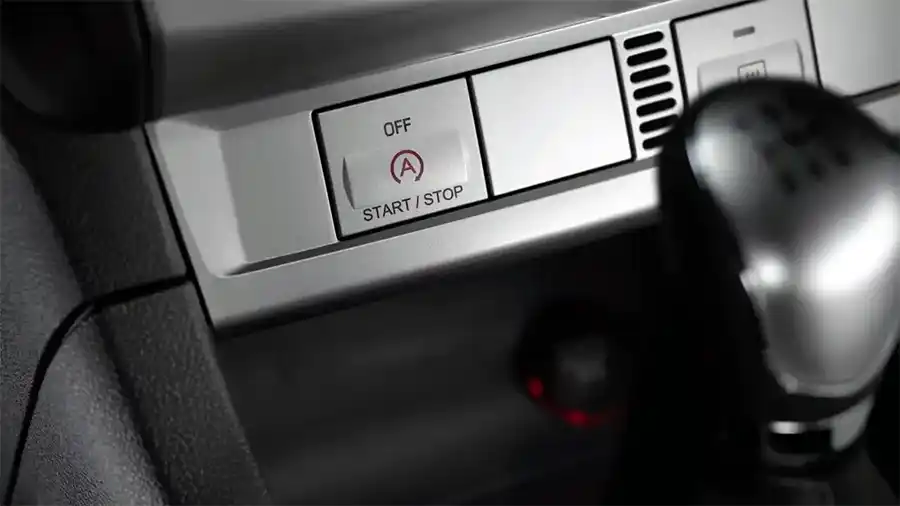
The Start-Stop system was designed to reduce fuel consumption and emissions in urban environments: it shuts off the engine during brief stops and restarts it when you need to move again. Its "permanent" deactivation has become popular, but it's not always a good idea. Here's a practical and critical look, free of myths.
ADVANTAGES OF THE START-STOP SYSTEM
- Lower consumption and CO₂ in the city (traffic light/traffic jam sections).
- Fewer hours of engine idling.
- Homologation: the vehicle meets the expected WLTP/NEDC values.
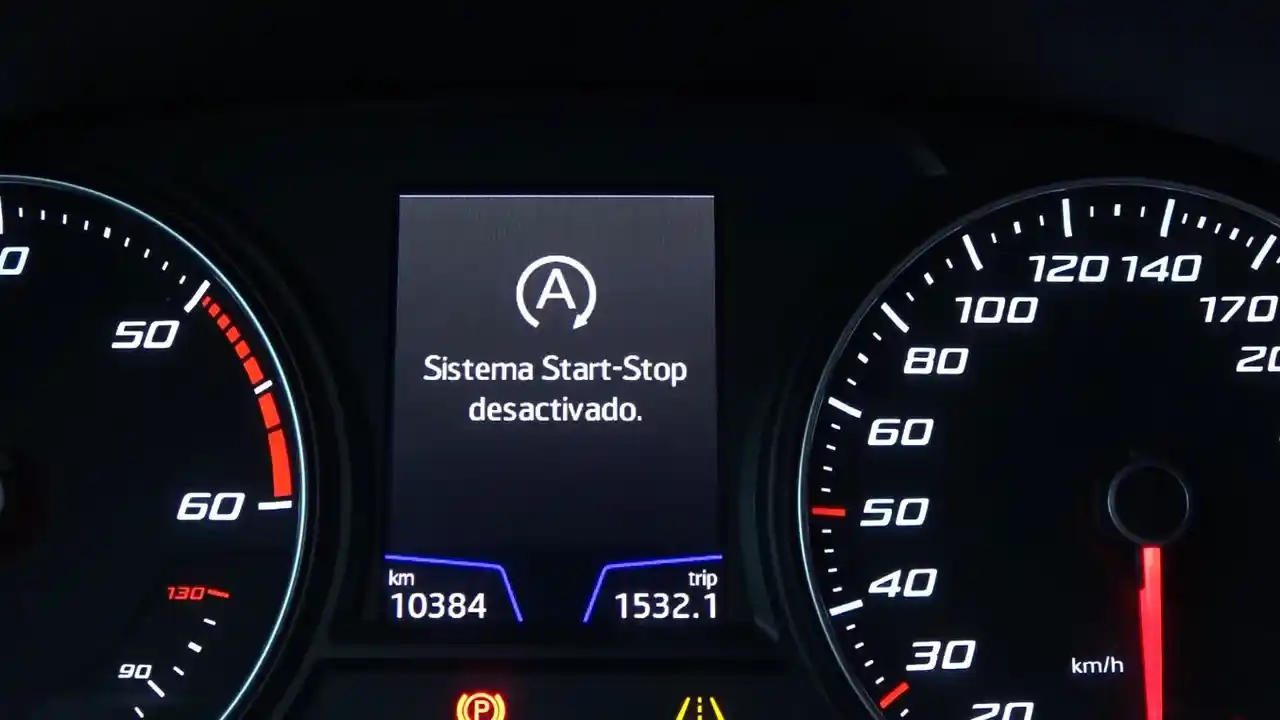
PERCEIVED DISADVANTAGES OF THE START-STOP SYSTEM
- A feeling of "cut-off" at the output if the calibration is poor or the battery is just barely adequate.
- Greater demands on the battery and starter motor (although they are of reinforced design).
- In well-equipped booths (air conditioning, audio, peripherals) it can be intrusive.
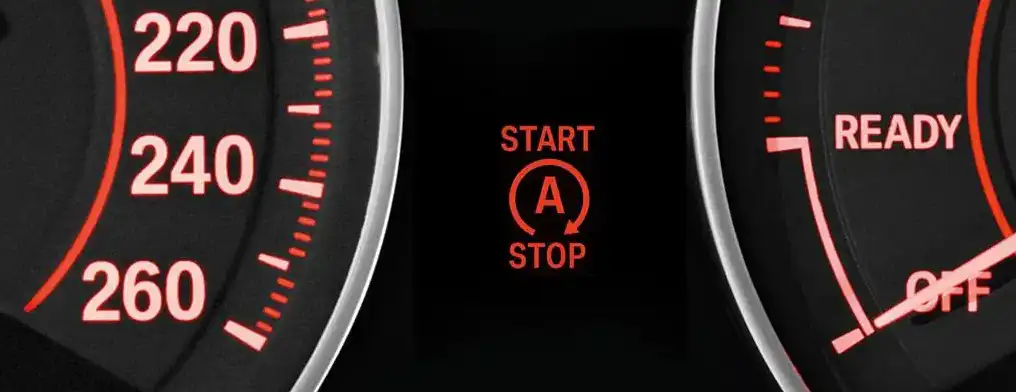
RISKS OF DEACTIVATING IT – PERMANENT VS TEMPORARY
A simple voltage check with a multimeter or electronic tester can prevent trouble. The ideal voltage with the engine off should be between 12.5 and 12.8 volts. If it drops below 12.2 volts, it's a good idea to recharge it or take it to a workshop.
It is also advisable to keep the terminals clean, check the alternator, and, above all, replace the battery before it fails completely.
USE THE DASHBOARD DEACTIVATION BUTTON
- This is the method specified by the manufacturer. It does not affect homologation or warranties.
- It usually reactivates on the next startup.
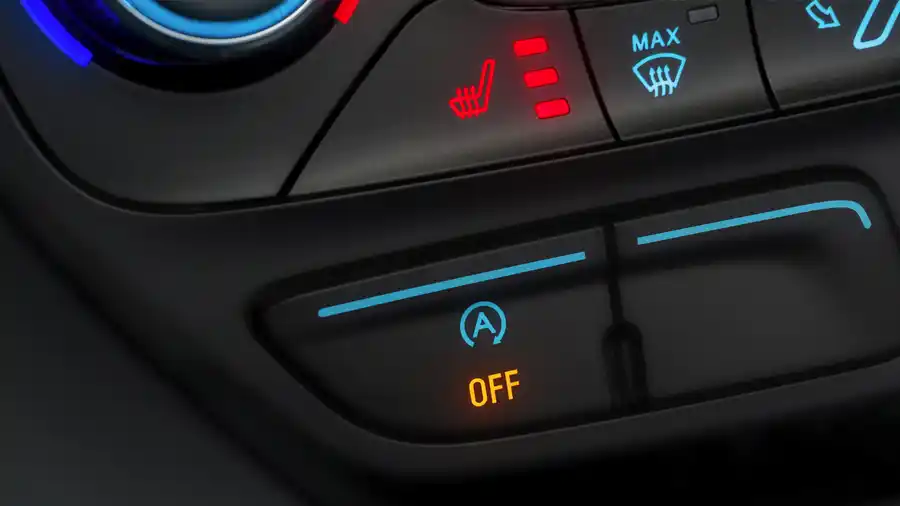
PERMANENT DEACTIVATION BY CODING, RELAYS OR IBS EMULATORS
- Warranty and insuranceAny unauthorized modification may complicate claims.
- MOT/InspectionChanges that affect emissions may be considered undocumented reform.
- Emissions and BEZMore idling time = more CO₂/NOx in urban use; in fleets it can impact targets ESG.
- Electronic errorsBattery sensor emulators (IBS) or poorly done reprogramming generate DTCs, abnormal thermal/climatic strategies, and off-map loads.
- Charging cycleIf the car "thinks" it has another battery, it can over/under-charge and shorten its life.
- Technical responsibilityWorkshops assume an added risk if they execute or endorse the cancellation.
BATTERY AND ALTERNATOR: WHAT REALLY MATTERS
- Appropriate technology: S/S requires EFB (basic passenger cars) or AGM (higher microcycle and electrical demand). Installing a conventional battery is a recipe for problems.
- Battery registration/coding: When replacing it, you have to "tell" the ECU/IBS to recalibrate the load.
- Health status (SoH): Many S/S annoyances are a symptom of a worn-out battery, not the system.
- Actual use: Very short journeys, intense cold, or high electrical demand reduce the frequency of S/S activation for protection; that is normal.
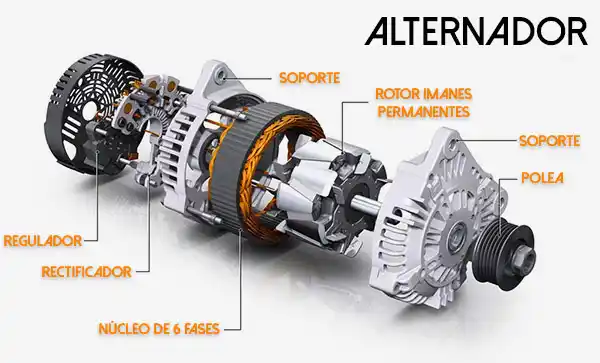
DOES THE STARTER MOTOR BREAK DOWN SOONER?
Vehicles with S/S mount:
- Reinforced starter motors and more durable ring gears.
- Intelligent alternators and specific starting maps.
With proper maintenance, the lifespan is not significantly reduced; what does kill batteries and starters is inadequate technology or incorrect calibrations.
WHEN MIGHT IT MAKE SENSE TO LIMIT IT
- Vehicles with intensive auxiliary equipment at idle (assistance, car-PC, light refrigerated chambers).
- Very specific driving (continuous maneuvers where the restart is truly disruptive).
Even so, prioritize manual deactivation by button or official calibrations (if they exist), never electrical “tricks”.
BEST PRACTICES BEFORE CONSIDERING CANCELLING IT
- Check the battery (load test and actual capacity test). Replace with an equivalent or approved EFB/AGM battery.
- Code/register the new battery in the ECU.
Update engine/BCM software if the manufacturer has released S/S improvements. - Check the IBS (battery sensor) and the grounding system.
- Keep the car charged if you make short journeys (use an occasional smart external charger).
- Use the button when it bothers you; it's the cleanest solution.
CONCLUSION
Disabling the Start-Stop system abruptly is usually a bad idea: it adds legal and technical risks and rarely solves the root cause of the problem (inadequate or worn-out battery, calibration issues, usage habits). If it bothers you, deactivate it occasionally using the button and make sure you have the correct battery (EFB/AGM) properly registered and the system is up to date. I would only consider a more extensive limitation if there is an official manufacturer's procedure for your specific model and usage.

